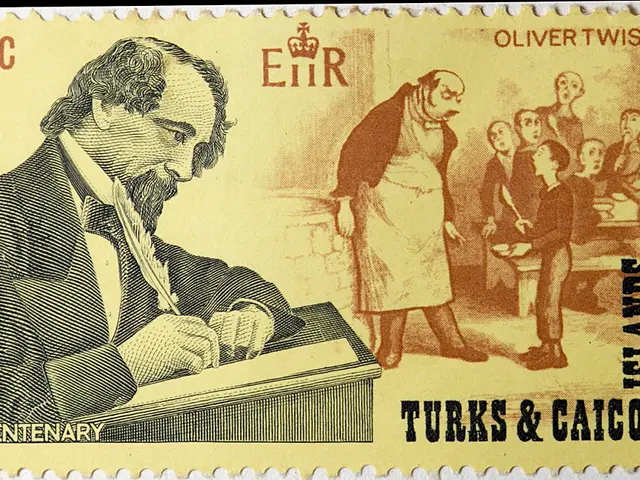Inflation Root Causes Examined via Producer Price Index (PPI): Understanding Components, Calculation Methods, and Significance
The Producer Price Index (PPI), a significant yet commonly overlooked indicator, provides critical insights into inflation. While its consumer-centric counterpart, the Consumer Price Index (CPI), takes center stage, the PPI offers a valuable understanding of inflation's origins by tracking the prices businesses receive for their goods.
Understanding the PPI's Workings
The Producer Price Index (PPI) measures the changes in the costs businesses incur as they sell their offerings. In contrast to the CPI, which focuses solely on consumer prices at the end of the production line, the PPI reveals inflation's early origins within the economic cycle.
A Peek into the PPI's Components
The PPI isn't a one-size-fits-all metric. The specific goods categorized can vary from country to country. Among the typical components are inputs (raw materials and supplies), intermediate goods (partially finished products), and final goods (complete, consumer-ready items).
Measuring Inflation with the PPI
To calculate accurate inflation figures, the PPI compares prices from a chosen base year (usually 100) to the current period. Using the formula:
- PPI = (Current price of goods / Base year price of goods) x 100
An accurate PPI calculation for a basket of goods averages out the results, providing a clear picture of producer price inflation.
Exploring Producer Price Inflation
Now that we've discussed the PPI's components and calculation method, let's delve into producer price inflation. This refers to the rate at which producers' earnings for their goods increase over time.
The Producer Price Inflation Formula
Economists employ a similar formula to calculate the rate of producer price inflation as they do for consumer price inflation:
- Producer inflation rate = [(PPIt / PPI(t-1)) - 1] x 100%
Applying this formula reveals the percentage change in producer prices between the current and previous periods.
Interpreting the Data: What Does it Mean?
For example, a calculated producer price inflation rate of 5% signifies a 5% increase in producers' earnings compared to the preceding period. As producers experience higher costs for raw materials, labor, or transportation, these expenses can eventually be passed on to consumers through increased retail prices.
Analyzing the Connections Between PPI and CPI
While PPI and CPI might seem interchangeable, they hold distinct roles in pinpointing inflation. By monitoring their respective trends, analysts can formulate informed opinions about price changes in the wider economy.
The PPI as a Leading Indicator for CPI
Because price increases experienced by producers for raw materials, labor, or transportation often translate into higher production costs, the PPI serves as a leading indicator for the CPI. Bearing this in mind, a rising PPI may indicate potential future increases in the CPI, offering valuable foresight for stakeholders.
Unearthing the Key Differences Between PPI and CPI
While PPI and CPI have many similarities, they boast essential differences:
- Scope: The PPI encompasses not only consumer goods but also business goods like machinery, parts, and industrial chemicals. The CPI, conversely, focuses exclusively on consumer goods and services.
- Focus: The PPI prioritizes producer revenue, while the CPI emphasizes consumer spending.
- Coverage: The PPI typically excludes imported goods, while the CPI includes both domestic and imported consumer products.
Why the PPI Matters
The Producer Price Index (PPI)'s influences transcend mere inflation measurement. Its value lies in its power to impact businesses, investors, and policymakers worldwide.
Predicting Consumer Price Trends
By examining price changes at the production stage, the PPI offers valuable insights into potential future consumer price inflation (CPI). Rising PPI suggests future inflationary pressures in the consumer market, highlighting the need for strategic adjustments in pricing models, production planning, and overall economic forecasts.
A Tool for Pricing and Production Decisions
Beyond its significance for economists, the PPI aids businesses in making informed decisions:
- Pricing Strategies: The PPI offers crucial foresight for businesses to adjust pricing models and maintain profitability in light of potential future cost increases.
- Production Planning: Understanding input cost fluctuations enables businesses to optimize production processes and explore alternative suppliers to minimize cost pressures.
- Negotiation Power: Leveraging PPI data during negotiations with suppliers strengthens businesses' bargaining positions regarding raw material or component costs.
A Compass for Central Banks
Central banks rely on the PPI as a critical tool for guiding monetary policy decisions. By analyzing the PPI alongside the CPI, central banks gain a comprehensive understanding of inflation trends at various economic stages. This information is vital for setting suitable interest rates.
Limitations of the PPI
Despite the PPI's many benefits, it has its limitations. These include:
- Domestic focus: The PPI primarily reflects price changes for domestically produced goods, potentially underplaying the influence of imported goods on consumer spending.
- Production chain complexities: The PPI may fall short in capturing price fluctuations at every production chain stage.
- The Lag Effect: The PPI sometimes lags behind the impact of producer price changes on consumer prices.
A Closing Word
The PPI offers invaluable insights that extend beyond inflation measurement. Its significance stretches across businesses, investors, and policymakers, shaping the broader economic landscape. By understanding the intricacies of the PPI, stakeholders can make informed decisions and adapt to the ever-changing economic landscape.
- In the realm of business and personal-finance, the Producer Price Index (PPI) serves as a valuable tool for understanding early origins of inflation, helping businesses and investors anticipate changes in the cost of their goods and services.
- As a part of education-and-self-development, analyzing and interpreting PPI data can aid individuals in becoming more aware and proactive in their understanding of how inflation might affect their investments and overall financial well-being.








